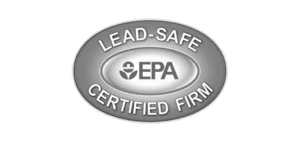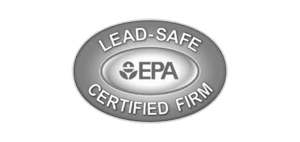Water damage is a common issue for homeowners, and if left unchecked, it can cause severe and lasting damage. How do you know if water damage is permanent? The signs can vary depending on the severity, location, and type of water damage.
In this section, we will explore the signs that indicate permanent water damage and the key indicators you need to look for to assess the extent of the impact. Understanding the various factors that contribute to water damage can help you take appropriate action to remediate and restore your property.
Key Takeaways
- Water damage can cause lasting damage if left unaddressed.
- The signs of permanent water damage can vary depending on the severity and type of water damage.
- Assessing the extent of water damage is crucial to determining the appropriate remediation and restoration options.
- Professional assessments are necessary to accurately evaluate the extent of water damage.
- Timely action is essential to prevent further damage and mitigate the impact of water damage.
Types of Water Damage
Water damage is not a one-size-fits-all issue. There are different types of water damage, and understanding each is crucial in determining the potential permanence of the damage.
| Type of Water Damage | Description | Examples |
|---|---|---|
| Clean Water Damage | The water comes from a clean source, posing no immediate health risks. | Broken water supply line or faucet, rainwater, melted snow or ice |
| Grey Water Damage | The water contains some level of contamination that can cause illness if ingested. | Washing machine or dishwasher overflow, toilet overflow, or water discharge from aquariums |
| Black Water Damage | The water is highly contaminated and can contain sewage, chemicals, or pathogens that pose severe health risks. | Floodwater, sewer backup, or water from natural disasters |
Each type of water damage requires different remediation approaches, and many factors, such as the type of material affected, and the length of exposure, can impact the permanence of the damage. Evaluating the extent of the damage and seeking professional assessment is essential to determine the best course of action.
Visible Signs of Water Damage
If you suspect that your property has suffered from water damage, it’s essential to identify the visible signs as early as possible. This will provide valuable insight into the severity of the damage and allow you to take the necessary steps to prevent additional harm.
Common visible signs of water damage include:
- Stains on ceilings or walls – discolored patches on surfaces can indicate that water has seeped through and caused damage.
- Peeling wallpaper or paint – moisture behind wallpaper or paint can cause it to peel or bubble.
- Musty odors – a damp, musty smell can indicate the presence of mold resulting from water damage.
- Warped or buckled floors – water damage to floors can cause them to warp or buckle, making it difficult to walk on or causing tripping hazards.
- Puddles or standing water – water that accumulates in pools or puddles can indicate a leak or burst pipe.
If you notice any of these visible signs of water damage, it’s crucial to address them promptly. Ignoring the problem can lead to further damage, such as structural damage or mold growth.
Structural Damage and Mold Growth
When water damage occurs in your home, it can have severe consequences. One of the most common results of water damage is structural damage. This type of damage affects your home’s foundation, causing it to weaken, shift, or even collapse. As a result, your home’s structural integrity is compromised, making it vulnerable to further damage. The longer you leave structural damage unaddressed, the more costly and extensive the repairs become.
Mold growth is another potential consequence of water damage. Water-damaged areas become a breeding ground for mold, which can have adverse health effects on you and your family. Some common symptoms associated with mold exposure include respiratory problems, allergies, and skin irritation.
It’s essential to address structural damage and mold growth immediately to prevent further damage and exposure to harmful toxins. A professional water damage restoration company has the necessary expertise to identify and address both issues before they cause any further harm to your home or your health.
When it comes to addressing structural damage and mold growth, time is of the essence. Do not delay in seeking professional assistance before the situation gets worse.
Professional Water Damage Assessment
Seeking out a professional assessment is a critical step towards understanding the permanence of water damage on your property. An expert will use their extensive knowledge and specialized tools to evaluate the extent of the damage and determine the best course of action. Furthermore, relying on a professional assessment ensures that all issues are addressed and that any underlying causes are identified and corrected.
During a professional assessment, the expert will generally conduct a comprehensive inspection of your property, assessing both visible and potential damage. This inspection will help identify any areas in your home that have been impacted by water damage, as well as the extent of that damage. Based on their findings, the professional will provide you with a thorough report outlining the scope of the damage and the necessary steps required to remediate it.
It is important to note that relying on a professional assessment can provide you with peace of mind, as well as confidence in the fact that the damage has been properly assessed. This can help you make informed decisions about repairing or replacing damaged items within your property, thereby preventing any further water damage from occurring.
Overall, investing in a professional assessment following water damage is a wise decision. By relying on the knowledge and expertise of an experienced professional, you can ensure that all aspects of the damage are identified and addressed, thereby minimizing the potential for long-term and permanent damage to your property.
Remediation and Restoration Options
When it comes to remediation and restoration following water damage, there are different options you can explore. The choice of solutions depends on the extent of the damage, the affected materials, and the specific circumstances of your property. It is essential to seek professional assistance in determining the best course of action for your situation.
One option for water damage restoration is extraction. This process involves removing standing water from the affected area using specialized equipment such as pumps and vacuums. Extraction is crucial in preventing further damage and creating a clean slate for the restoration process to begin.
Drying is another critical step in water damage remediation. Professionals use dehumidifiers and air movers to eliminate excess moisture and prevent the growth of mold and mildew. Drying also ensures that the structural components of your property are not compromised or weakened.
If the damage is extensive, the restoration team may need to remove and replace damaged components. This could include removing drywall, insulation, flooring, and other materials that are damaged beyond repair. Replacement is a necessary step to restore your property to its pre-damage condition.
Another option for restoration is decontamination. This process involves removing any microorganisms and bacteria present in the water damage affected areas. The restoration team would apply specialized chemicals to clean and sanitize these areas to avoid potential health hazards.
It is essential to note that time is of the essence in water damage remediation and restoration. Delayed response to the water damage could lead to more extensive and expensive repairs. With quick action in seeking professional help, you can minimize the potential damage and restore your property to its original state.
Conclusion
Water damage can have long-lasting effects on your property if left unchecked. Identifying visible signs and seeking professional assessment can help you determine the extent of the damage. Structural damage and mold growth are common consequences of water damage, and addressing these issues promptly is crucial to mitigating the impact.
Fortunately, there are a variety of remediation and restoration options available to you. From simple DIY fixes to enlisting the expertise of professional restoration companies, there are solutions for every budget and level of damage.
Remember, the key to minimizing the effects of water damage is acting quickly. Don’t hesitate to seek expert opinion and explore your remediation options as soon as possible. With the right approach, you can protect your property and prevent water damage from becoming a permanent problem.
FAQ
Is water damage permanent?
Water damage can be permanent depending on the severity and duration of exposure. Immediate action is crucial to prevent further damage and increase the chances of successful restoration.
What are the signs of water damage?
Some common signs of water damage include water stains, musty odors, peeling or bubbling paint, warped or buckled flooring, and mold growth. These visible signs often indicate the presence of underlying water damage.
What are the different types of water damage?
There are three main categories of water damage: clean water damage (Category 1), gray water damage (Category 2), and black water damage (Category 3). Each category represents a different level of contamination and requires specific remediation methods.
How does water damage lead to structural damage and mold growth?
Water damage weakens the structural integrity of buildings, causing rot, decay, and deterioration. It also creates a favorable environment for mold growth, which can further damage the structure and pose health risks to occupants.
Why is a professional assessment necessary for water damage?
A professional assessment is crucial to accurately evaluate the extent of water damage. Experts have the knowledge and tools to identify hidden damage, assess potential risks, and provide recommendations for effective remediation and restoration.
What are the options for water damage remediation and restoration?
The appropriate remediation and restoration options depend on the extent of the damage and the affected materials. Typical options include water extraction, drying and dehumidification, mold remediation, structural repairs, and content restoration.
How can I address water damage on my property?
If you suspect water damage, it is essential to act promptly. Contact a professional water damage restoration company to assess the situation and provide guidance on the necessary steps for mitigating the damage and restoring your property.










